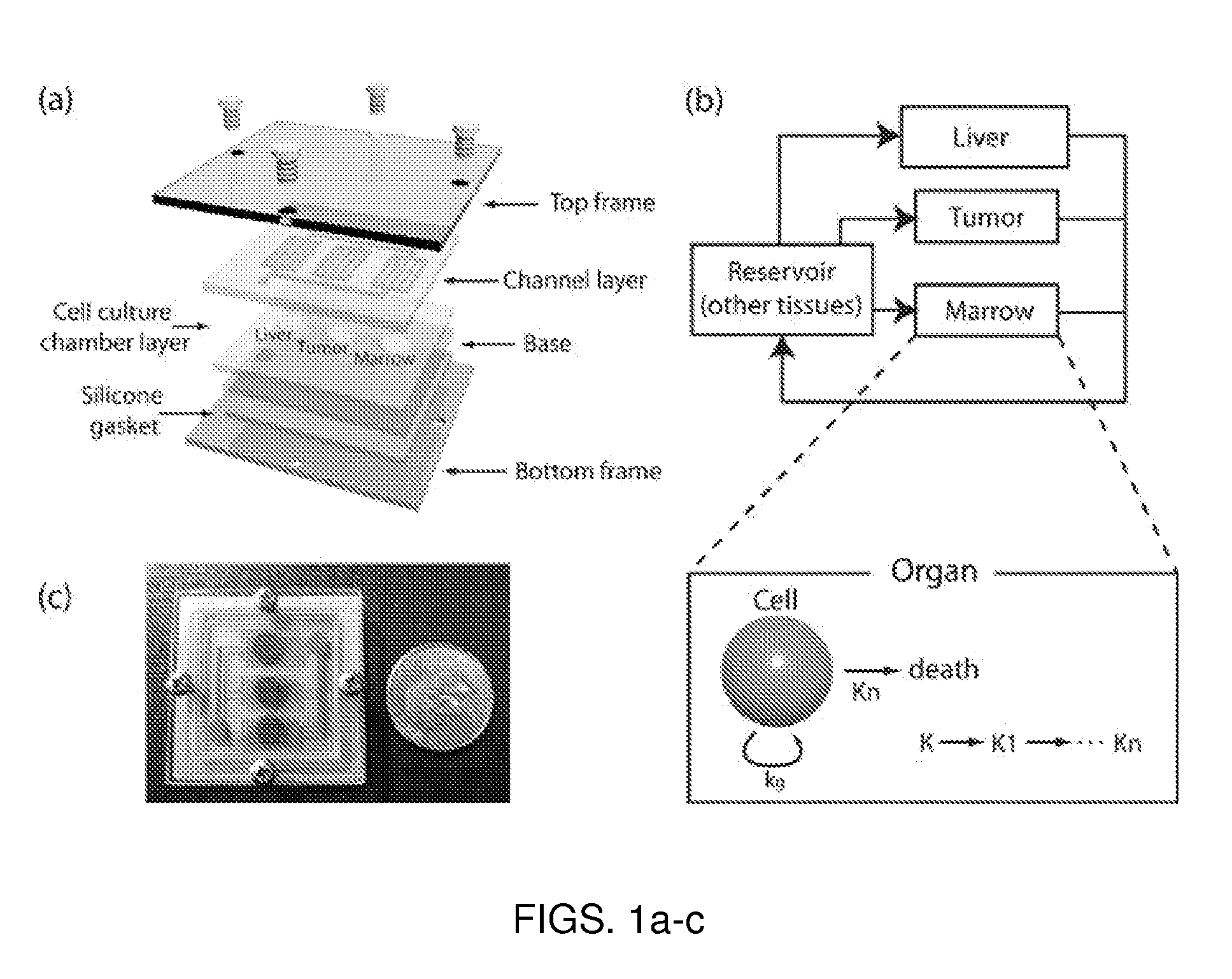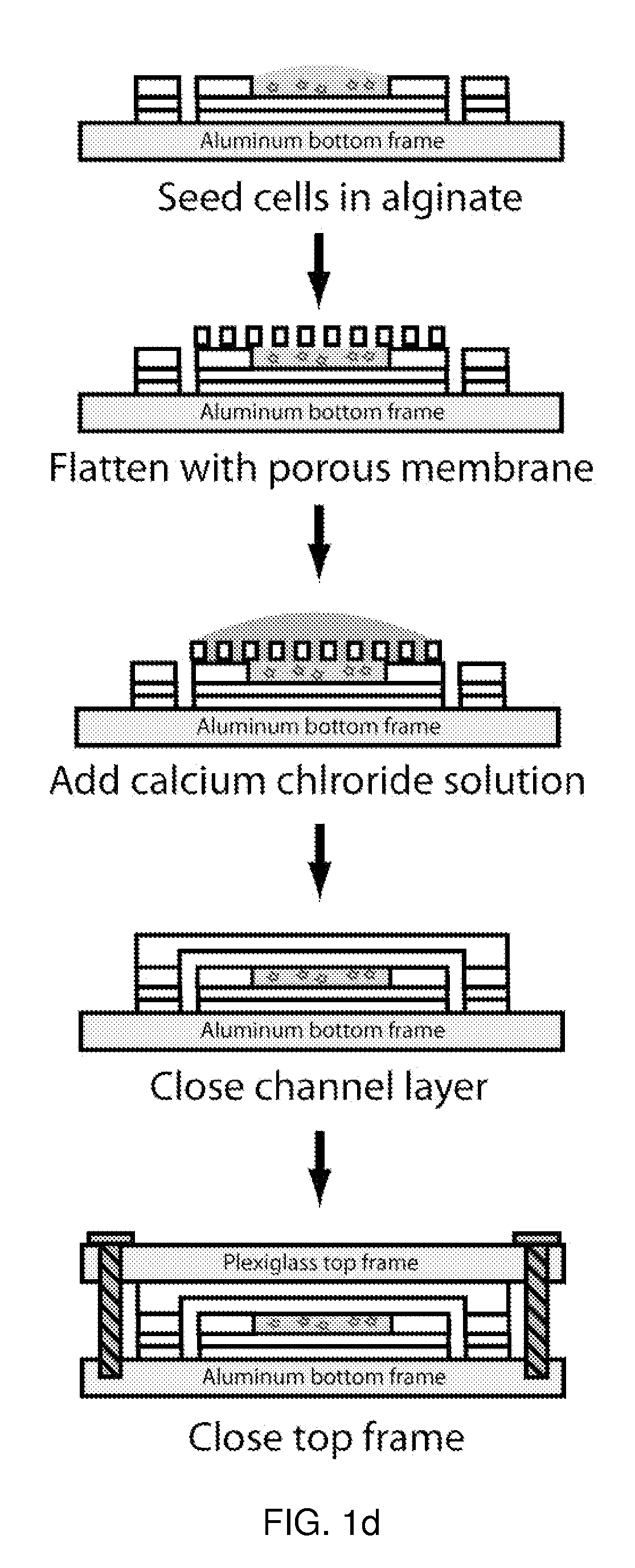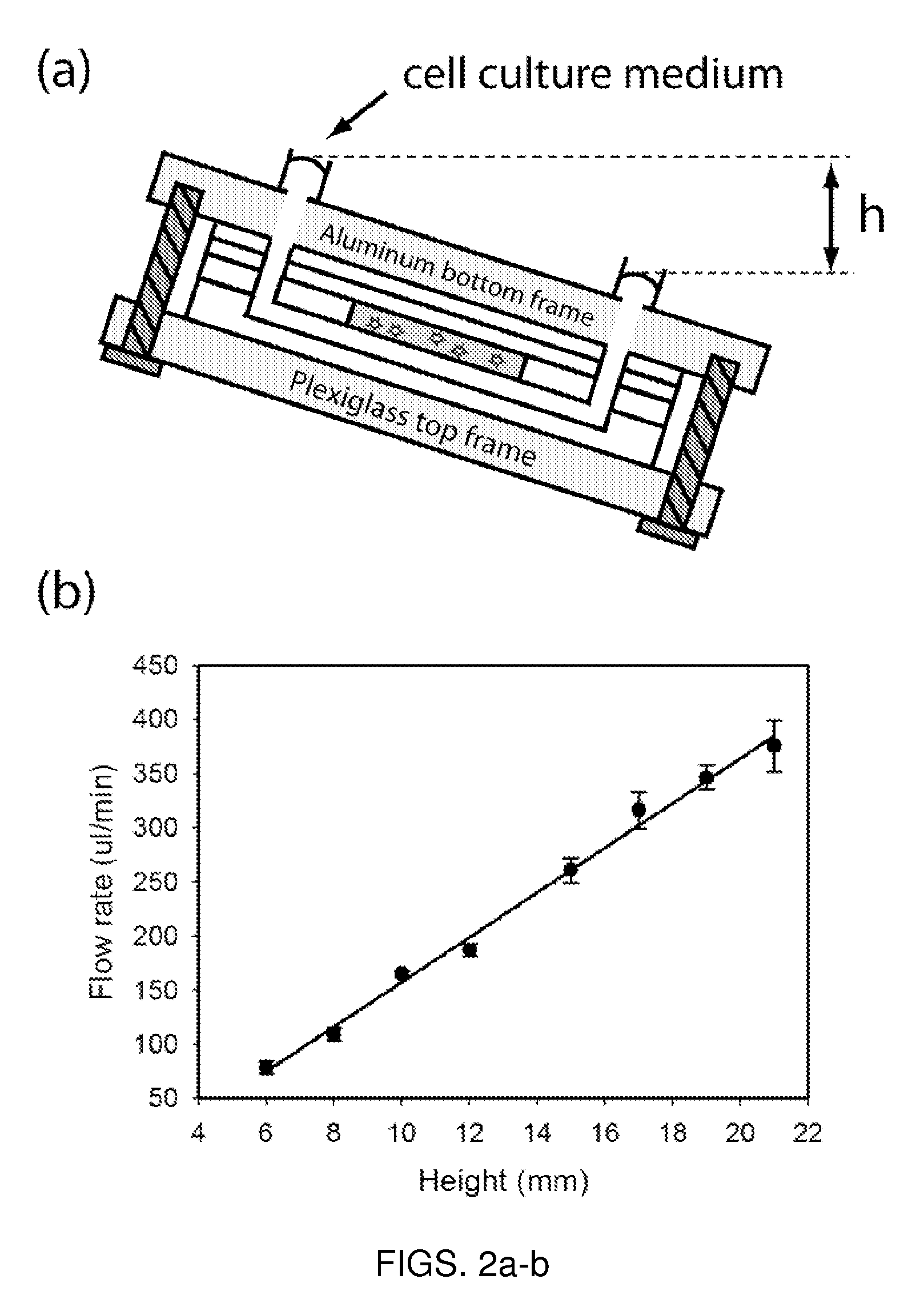Microfluidic device for pharmacokinetic-pharmacodynamic study of drugs and uses thereof
a microfluidic device and drug technology, applied in the field of microfluidic devices, can solve the problems of large differences, large culture differences, and increase the probability of drug failure in trials
- Summary
- Abstract
- Description
- Claims
- Application Information
AI Technical Summary
Benefits of technology
Problems solved by technology
Method used
Image
Examples
example 1
6.1 Example 1
Microfluidic Device for a Pharmacokinetic-Pharmacodynamic (PK-PD) Model on a Chip
[0195]Drug discovery is often impeded by the poor predictability of in vitro assays for drug toxicity. One primary reason for this observation is the inability to reproduce the pharmacokinetics (PK) of drugs in vitro. Mathematical models to predict the pharmacokinetics-pharmacodynamics (PK-PD) of drugs are available, but have several limitations, preventing broader application. This example demonstrates a microscale cell culture analog (μCCA), a microfluidic device based on a PK-PD model, in which multiple cell culture chambers are connected with fluidic channels to mimic multi-organ interactions. The μCCA can be used to test drug toxicity in a pharmacokinetic-based manner.
[0196]One critical issue with microfluidic devices is that specialized techniques are required for assembly and operation, limiting its usability to non-experts. The μCCA demonstrated in this example has enhanced usabilit...
example 2
6.2 Example 2
Embodiment of Microfluidic Device for Pharmacokinetic-Pharmacodynamic (PK-PD) Study of Drugs
[0284]6.2.1 Background
[0285]One of the fundamental challenges that a pharmaceutical industry faces during drug development process is extrapolation of in vitro cell-based assay to human response. Currently, the most common form of in vitro cell-based assay is multiwell plate assay, such as 96 or 384 well plates. These assays, however, often give results that are different from human responses, which increases the probability of the drug failing in clinical trials and increasing the cost of development. The main reasons for inaccurate predictions by such multiwell plate assays are 1) only single cells types are generally tested in a single well, which does not provide complex multi-organ interactions in the human body. 2) cells are cultured in 2-D monolayer cell culture inside the wells, and the behavior of cells cultured in 2-D monolayer is vastly different from the behavior of c...
PUM
| Property | Measurement | Unit |
|---|---|---|
| thick | aaaaa | aaaaa |
| thickness | aaaaa | aaaaa |
| thickness | aaaaa | aaaaa |
Abstract
Description
Claims
Application Information
 Login to View More
Login to View More - R&D
- Intellectual Property
- Life Sciences
- Materials
- Tech Scout
- Unparalleled Data Quality
- Higher Quality Content
- 60% Fewer Hallucinations
Browse by: Latest US Patents, China's latest patents, Technical Efficacy Thesaurus, Application Domain, Technology Topic, Popular Technical Reports.
© 2025 PatSnap. All rights reserved.Legal|Privacy policy|Modern Slavery Act Transparency Statement|Sitemap|About US| Contact US: help@patsnap.com



